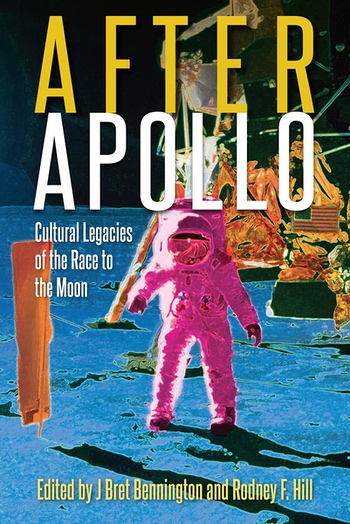Review: After Apolloby Jeff Foust
|
| That eclectic collection would be fine if the essays offered new historical insights or analysis. By and large, though, they do not |
The book’s subtitle, “Cultural Legacies of the Race to the Moon,” suggests the general theme of the book: a review not of the Apollo program itself (although the book’s first chapter is essentially an overview of Apollo) but of the effect it had on broader culture. The result is a bit scattershot: one essay examines the role chemistry played in Apollo, while another looks at how immigrants helped NASA during Apollo and beyond. Other contributions range from how IMAX movies were used to portray Apollo missions to how women were portrayed in space-related entertainment and fashion during that era. The through line connecting those essays is meandering, to say the least.
That eclectic collection would be fine if the essays offered new historical insights or analysis. By and large, though, they do not. Many of the essays trod familiar ground, from the partnership between Walt Disney and Wernher von Braun on envisioning spaceflight in the 1950s to the undercurrent of dissent about spending so much money on the race to the Moon even as Apollo 11 was going to the Moon. The essays rely heavily on secondary sources and contemporary news accounts rather than historical archives and other primary sources that might offer something new.
The conclusions that some authors reach are also suspect. The essay about spending for Apollo cites an “infamous seven-hour debate” in the Senate about proposals to both cut and increase NASA spending, both of which are rejected. The “intensity and longevity” of the debate, the author concludes, “serve to illustrate a political trend marking the beginning of steep reductions in federal funding for the space program.” But that debate, according to the article it cites, took place in 1970. By that point NASA spending had already fallen by nearly half from its mid-1960s peak when adjusting for inflation; hardly, then, the “beginning” of steep reductions.
In the book’s introduction, the editors state that the essay on Disney and von Braun shows that President Eisenhower used the “Man in Space” episode they created “to help convince skeptical generals of the need of a government program to develop the capability to launch satellites.” But the author of that essay notes that the claim, from Disney animator Ward Kimball, was “difficult to verify” by other historians who called it “partially accurate” at best; the essay doesn’t provide any new information to verify or reject the claim.
There are a couple interesting essays in the book, such as looking at how filmmakers used IMAX to depict Apollo missions in the documentary Magnificent Desolation and the film First Man, as well as the influence of the space race on women’s fashion and in films and television. (Unfortunately, the latter essay, while describing many space-age fashions of the 1960s, includes few photos of them, leaving the reader to have to imagine them.) That’s not enough, though, to justify the book, particularly at the extraordinarily high price set by the academic publisher. The last words on Apollo likely haven’t been written, but maybe it’s time to take a breather.
Note: we are using a new commenting system, which may require you to create a new account.
